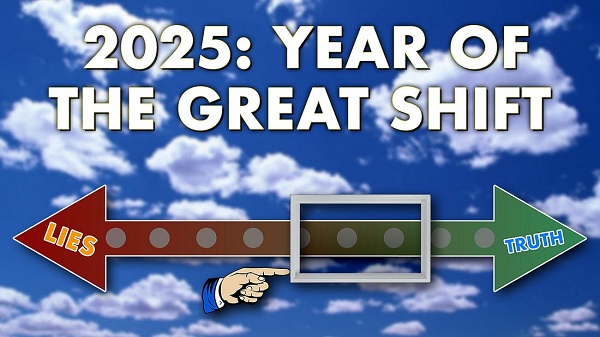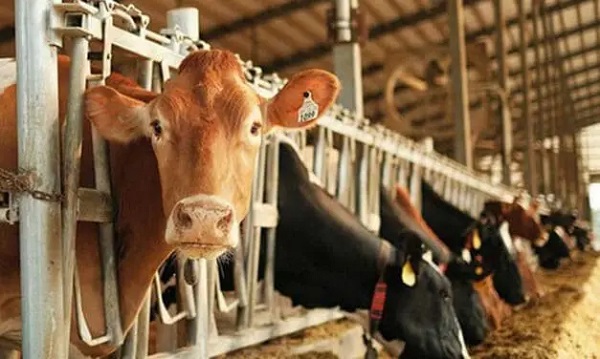Alberta
Investigation concludes police shooting of suspect holding gun a reasonable use of force

From the Alberta Serious Incident Response Team
RCMP used reasonable force during serious injury incident
On April 29, 2019, the Alberta Serious Incident Response Team (ASIRT) was directed to investigate the circumstances surrounding injuries sustained by a 33-year-old man during his arrest by members of the Lloydminster RCMP that same date.
On that date, members of the Lloydminster RCMP observed a male driver operating a stolen Dodge Ram 2500 truck within Lloydminster city limits. The truck had been stolen earlier that day during a break and enter at a local vehicle repair shop. Video footage from the repair shop depicted the 33-year-old man as the individual responsible for the break and enter, and at the time, the man was also under investigation in relation to a homicide that had occurred on April 27, 2019.
Police attempted to conduct a traffic stop on the stolen truck, but the truck fled. Officers elected not to pursue the vehicle; however, the vehicle was known to have engine problems and was not expected to be drivable for long. A short time later, two police officers observed the stolen truck in an industrial area of the city. In order to avoid a pursuit, both officers followed the truck from a distance until they observed plumes of smoke emanating from the truck, leading them to believe that the vehicle’s engine had failed.
The two officers stopped their fully marked police vehicles in front of and behind the truck, blocking its path. The man exited the driver’s side door of the truck and fled on foot toward the rear of the truck and into a fenced compound. One of the police officers pursued the man on foot while the second ensured the stolen truck was empty before joining the foot pursuit a short distance behind. As the first officer ran, he called out to the man by name, advising him that he was under arrest. The man continued to run, but soon lost his footing and stumbled on the gravel. The officer drew his conducted energy weapon (CEW) and issued a verbal command for the man to stay down. When the man rose to his feet and began running again, both officers observed a black handgun in the man’s right hand. The first officer radioed that the man had a gun, then drew his service pistol from its holster and issued repeated verbal commands for the man to drop the gun. The man continued running and, as he rounded the corner of a building, he pointed the handgun at the pursuing officer, who then fired his service pistol.
After the officer fired, the man ran behind a parked Volkswagen Jetta. As he turned to get behind the Jetta, still holding the gun in his right hand, the officer fired again. The man ducked behind the car as the officer fired at him through the window of the parked Jetta. The second officer described the man’s actions as a tactical movement to use the vehicle as cover, and after the first officer fired, the man crouched down behind the vehicle. As both officers shouted repeated verbal commands for the man to drop the firearm, the man rose and lifted his firearm. At that moment, the officer fired again – this time striking the man, who fell to the ground, still holding the handgun. Following repeated verbal commands, the man eventually pushed the gun away and rolled over, at which time the second officer placed him in handcuffs.
With the man now in handcuffs, the first officer placed pressure on his wound while the second officer retrieved a first aid kit from the police vehicle. The two officers administered first aid to the man until he was transported by EMS to hospital, where it was confirmed that he had sustained a single penetrating gunshot wound to his left shoulder.
A loaded semi-automatic .22-calibre handgun was recovered from the incident scene, along with other items associated with both the man and the owner of the stolen vehicle. An image of the recovered firearm is not being released at this time, as it relates to a matter that remains before the courts.
Physical and video evidence confirm that five shots were fired during the incident by the first police officer, with approximately 22 seconds elapsing between the first shot and the final shot. Video evidence confirms the placement of the two officers matches the description in their statements, and civilian witness evidence confirms that the man retained possession of the firearm up until the officer’s final shot.
Under Section 25 of the Criminal Code, a police officer is authorized to use as much force as is necessary in order to carry out their lawful duties. In this case, the evidence conclusively establishes that both police officers were on duty, were operating marked RCMP vehicles, and were attired in RCMP uniforms. At the time of the incident, the man was subject to lawful arrest for both the theft and possession of the stolen truck, as well as the flight from police that preceded the incident. In addition to those grounds for arrest, the officer who fired was also aware of the man’s involvement in a homicide incident several days prior, during which a firearm was used. The officer’s knowledge of the man’s involvement and the nature of that incident reasonably elevated the officer’s risk assessment of the situation.
During his interview, the man denied any intention to harm police; however, it is clear from the evidence that throughout the incident he repeatedly refused to follow verbal commands and maintained possession of a firearm until after the officer’s final shot. The man’s actions during the incident, combined with the information available to the officer, were more than sufficient to establish an objectively reasonable fear of death or grievous bodily harm on the part of the officer, and to justify a use of force proportionate to that threat.
While the man sustained an injury during the arrest, his actions gave the officer reasonable cause to believe that his life was endangered; therefore, the force that he used to address that danger was also reasonable. Accordingly, there are no grounds to believe that an offence was committed by any police officer, and no charges will be laid.
ASIRT’s mandate is to effectively, independently and objectively investigate incidents involving Alberta’s police that have resulted in serious injury or death to any person.
Alberta
Alberta Next Panel calls to reform how Canada works

From the Fraser Institute
By Tegan Hill
The Alberta Next Panel, tasked with advising the Smith government on how the province can better protect its interests and defend its economy, has officially released its report. Two of its key recommendations—to hold a referendum on Alberta leaving the Canada Pension Plan, and to create a commission to review programs like equalization—could lead to meaningful changes to Canada’s system of fiscal federalism (i.e. the financial relationship between Ottawa and the provinces).
The panel stemmed from a growing sense of unfairness in Alberta. From 2007 to 2022, Albertans’ net contribution to federal finances (total federal taxes paid by Albertans minus federal money spent or transferred to Albertans) was $244.6 billion—more than five times the net contribution from British Columbians or Ontarians (the only other two net contributors). This money from Albertans helps keep taxes lower and fund government services in other provinces. Yet Ottawa continues to impose federal regulations, which disproportionately and negatively impact Alberta’s energy industry.
Albertans were growing tired of this unbalanced relationship. According to a poll by the Angus Reid Institute, nearly half of Albertans believe they get a “raw deal”—that is, they give more than they get—being part of Canada. The Alberta Next Panel survey found that 59 per cent of Albertans believe the federal transfer and equalization system is unfair to Alberta. And a ThinkHQ survey found that more than seven in 10 Albertans feel that federal policies over the past several years hurt their quality of life.
As part of an effort to increase provincial autonomy, amid these frustrations, the panel recommends the Alberta government hold a referendum on leaving the Canada Pension Plan (CPP) and establishing its own provincial pension plan.
Albertans typically have higher average incomes and a younger population than the rest of the country, which means they could pay a lower contribution rate under a provincial pension plan while receiving the same level of benefits as the CPP. (These demographic and economic factors are also why Albertans currently make such a large net contribution to the CPP).
The savings from paying a lower contribution rate could result in materially higher income during retirement for Albertans if they’re invested in a private account. One report found that if a typical Albertan invested the savings from paying a lower contribution rate to a provincial pension plan, they could benefit from $189,773 (pre-tax) in additional retirement income.
Clearly, Albertans could see a financial benefit from leaving the CPP, but there are many factors to consider. The government plans to present a detailed report including how the funds would be managed, contribution rates, and implementation plan prior to a referendum.
Then there’s equalization—a program fraught with flaws. The goal of equalization is to ensure provinces can provide reasonably comparable public services at reasonably comparable tax rates. Ottawa collects taxes from Canadians across the country and then redistributes that money to “have not” provinces. In 2026/27, equalization payments is expected to total $27.2 billion with all provinces except Alberta, British Columbia and Saskatchewan receiving payments.
Reasonable people can disagree on whether or not they support the principle of the program, but again, it has major flaws that just don’t make sense. Consider the fixed growth rate rule, which mandates that total equalization payments grow each year even when the income differences between recipient and non-recipient provinces narrows. That means Albertans continue paying for a growing program, even when such growth isn’t required to meet the program’s stated objective. The panel recommends that Alberta take a leading role in working with other provinces and the federal government to reform equalization and set up a new Canada Fiscal Commission to review fiscal federalism more broadly.
The Alberta Next Panel is calling for changes to fiscal federalism. Reforms to equalization are clearly needed—and it’s worth exploring the potential of an Alberta pension plan. Indeed, both of these changes could deliver benefits.
Alberta
Alberta’s new diagnostic policy appears to meet standard for Canada Health Act compliance

From the Fraser Institute
By Nadeem Esmail, Mackenzie Moir and Lauren Asaad
In October, Alberta’s provincial government announced forthcoming legislative changes that will allow patients to pay out-of-pocket for any diagnostic test they want, and without a physician referral. The policy, according to the Smith government, is designed to help improve the availability of preventative care and increase testing capacity by attracting additional private sector investment in diagnostic technology and facilities.
Unsurprisingly, the policy has attracted Ottawa’s attention, with discussions now taking place around the details of the proposed changes and whether this proposal is deemed to be in line with the Canada Health Act (CHA) and the federal government’s interpretations. A determination that it is not, will have both political consequences by being labeled “non-compliant” and financial consequences for the province through reductions to its Canada Health Transfer (CHT) in coming years.
This raises an interesting question: While the ultimate decision rests with Ottawa, does the Smith government’s new policy comply with the literal text of the CHA and the revised rules released in written federal interpretations?
According to the CHA, when a patient pays out of pocket for a medically necessary and insured physician or hospital (including diagnostic procedures) service, the federal health minister shall reduce the CHT on a dollar-for-dollar basis matching the amount charged to patients. In 2018, Ottawa introduced the Diagnostic Services Policy (DSP), which clarified that the insured status of a diagnostic service does not change when it’s offered inside a private clinic as opposed to a hospital. As a result, any levying of patient charges for medically necessary diagnostic tests are considered a violation of the CHA.
Ottawa has been no slouch in wielding this new policy, deducting some $76.5 million from transfers to seven provinces in 2023 and another $72.4 million in 2024. Deductions for Alberta, based on Health Canada’s estimates of patient charges, totaled some $34 million over those two years.
Alberta has been paid back some of those dollars under the new Reimbursement Program introduced in 2018, which created a pathway for provinces to be paid back some or all of the transfers previously withheld on a dollar-for-dollar basis by Ottawa for CHA infractions. The Reimbursement Program requires provinces to resolve the circumstances which led to patient charges for medically necessary services, including filing a Reimbursement Action Plan for doing so developed in concert with Health Canada. In total, Alberta was reimbursed $20.5 million after Health Canada determined the provincial government had “successfully” implemented elements of its approved plan.
Perhaps in response to the risk of further deductions, or taking a lesson from the Reimbursement Action Plan accepted by Health Canada, the province has gone out of its way to make clear that these new privately funded scans will be self-referred, that any patient paying for tests privately will be reimbursed if that test reveals a serious or life-threatening condition, and that physician referred tests will continue to be provided within the public system and be given priority in both public and private facilities.
Indeed, the provincial government has stated they do not expect to lose additional federal health care transfers under this new policy, based on their success in arguing back previous deductions.
This is where language matters: Health Canada in their latest CHA annual report specifically states the “medical necessity” of any diagnostic test is “determined when a patient receives a referral or requisition from a medical practitioner.” According to the logic of Ottawa’s own stated policy, an unreferred test should, in theory, be no longer considered one that is medically necessary or needs to be insured and thus could be paid for privately.
It would appear then that allowing private purchase of services not referred by physicians does pass the written standard for CHA compliance, including compliance with the latest federal interpretation for diagnostic services.
But of course, there is no actual certainty here. The federal government of the day maintains sole and final authority for interpretation of the CHA and is free to revise and adjust interpretations at any time it sees fit in response to provincial health policy innovations. So while the letter of the CHA appears to have been met, there is still a very real possibility that Alberta will be found to have violated the Act and its interpretations regardless.
In the end, no one really knows with any certainty if a policy change will be deemed by Ottawa to run afoul of the CHA. On the one hand, the provincial government seems to have set the rules around private purchase deliberately and narrowly to avoid a clear violation of federal requirements as they are currently written. On the other hand, Health Canada’s attention has been aroused and they are now “engaging” with officials from Alberta to “better understand” the new policy, leaving open the possibility that the rules of the game may change once again. And even then, a decision that the policy is permissible today is not permanent and can be reversed by the federal government tomorrow if its interpretive whims shift again.
The sad reality of the provincial-federal health-care relationship in Canada is that it has no fixed rules. Indeed, it may be pointless to ask whether a policy will be CHA compliant before Ottawa decides whether or not it is. But it can be said, at least for now, that the Smith government’s new privately paid diagnostic testing policy appears to have met the currently written standard for CHA compliance.

Lauren Asaad
Policy Analyst, Fraser Institute
-

 Business2 days ago
Business2 days agoTaxing food is like slapping a surcharge on hunger. It needs to end
-

 Health2 days ago
Health2 days agoFDA warns ‘breast binder’ manufacturers to stop marketing to gender-confused girls
-

 Uncategorized18 hours ago
Uncategorized18 hours agoMortgaging Canada’s energy future — the hidden costs of the Carney-Smith pipeline deal
-

 International2 days ago
International2 days ago2025: The Year The Narrative Changed
-

 Business1 day ago
Business1 day agoThere’s No Bias at CBC News, You Say? Well, OK…
-

 Health2 days ago
Health2 days agoAll 12 Vaccinated vs. Unvaccinated Studies Found the Same Thing: Unvaccinated Children Are Far Healthier
-

 Agriculture2 days ago
Agriculture2 days agoSupply Management Is Making Your Christmas Dinner More Expensive
-

 Daily Caller2 days ago
Daily Caller2 days agoTrump Reportedly Escalates Pressure On Venezuela With Another Oil Tanker Seizure











